Wood Dining Table
Elevate your dining experience with the natural beauty and timeless appeal of wood dining tables. Crafted from high-quality materials and built to last, our selection of custom wood dining tables offers something for every style and space.
Welcome to Taitlin Studio
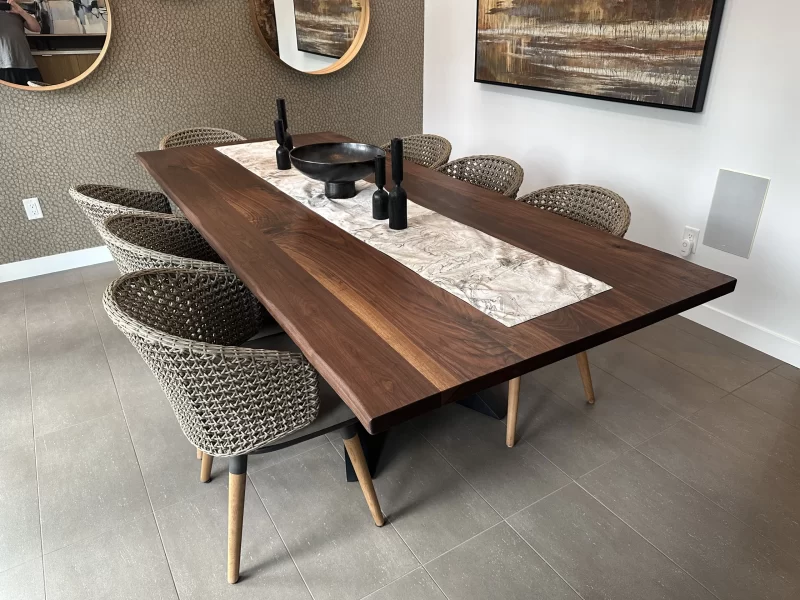
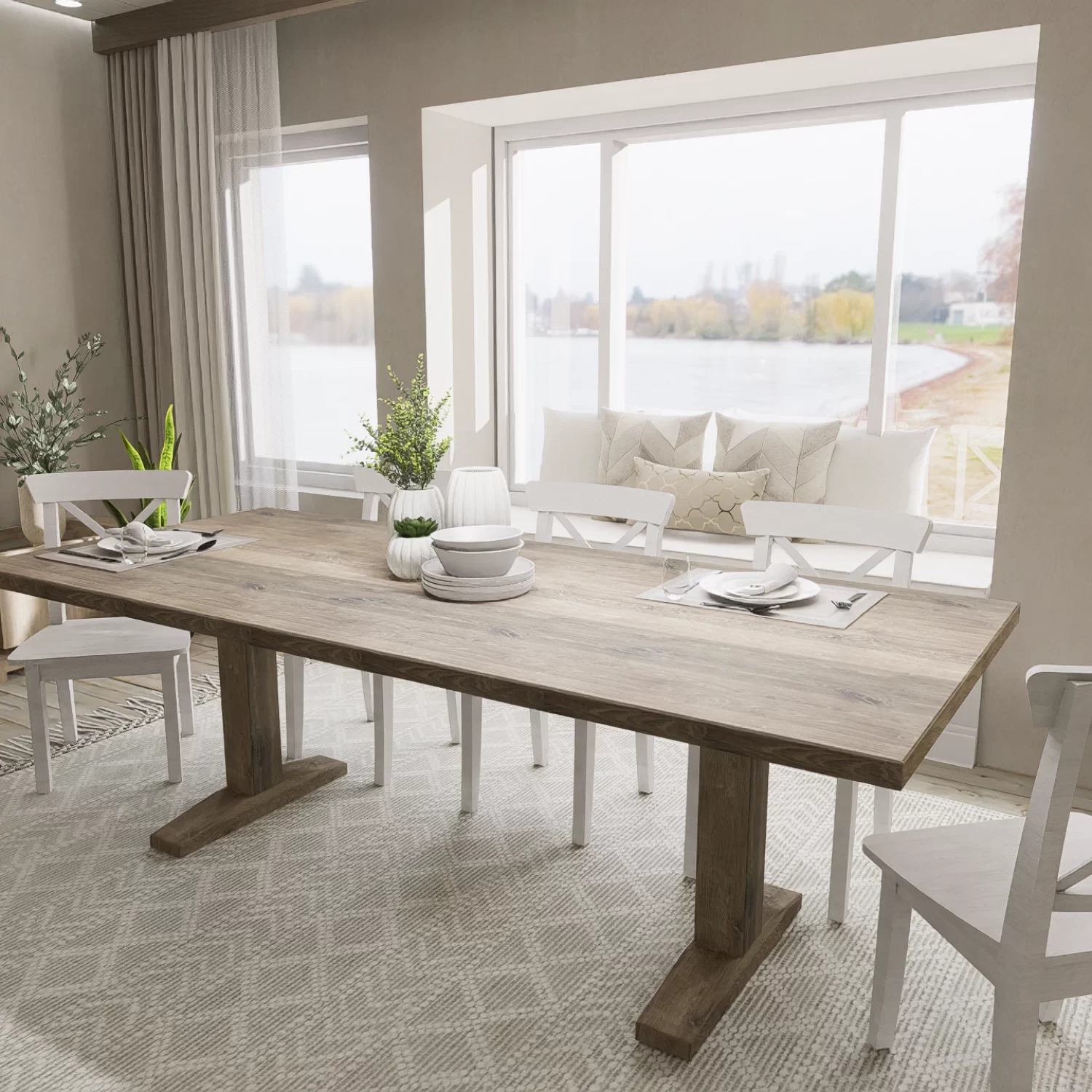
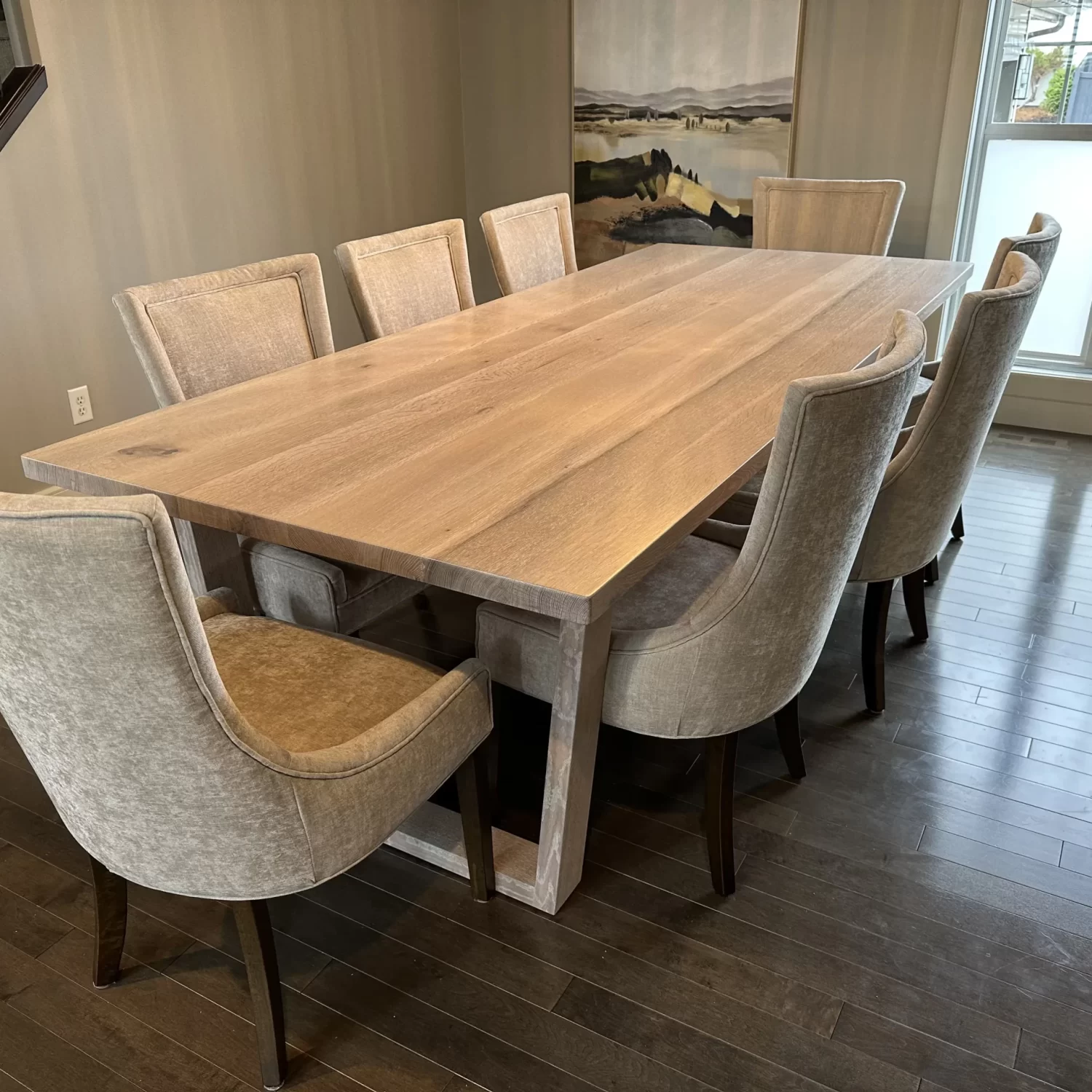
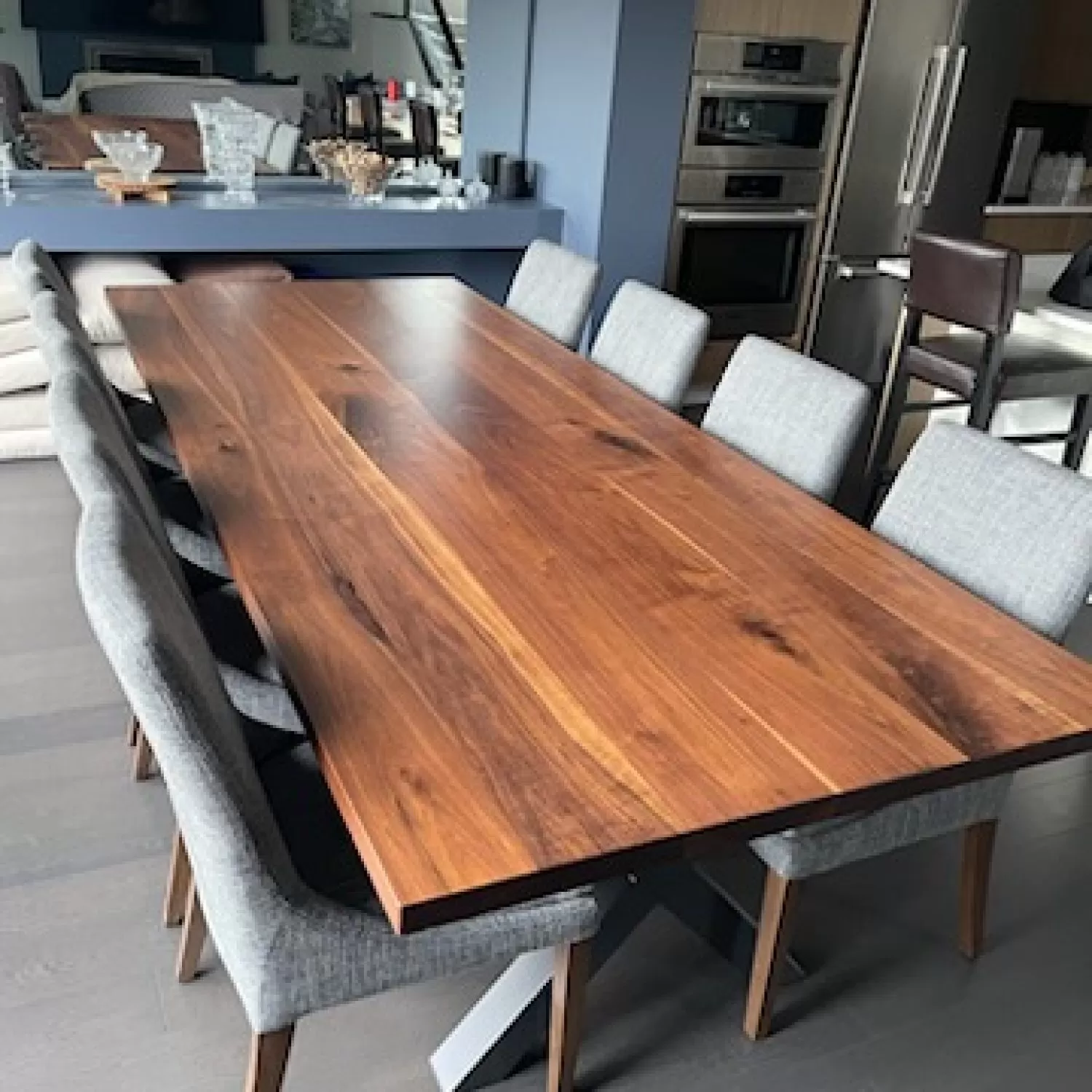
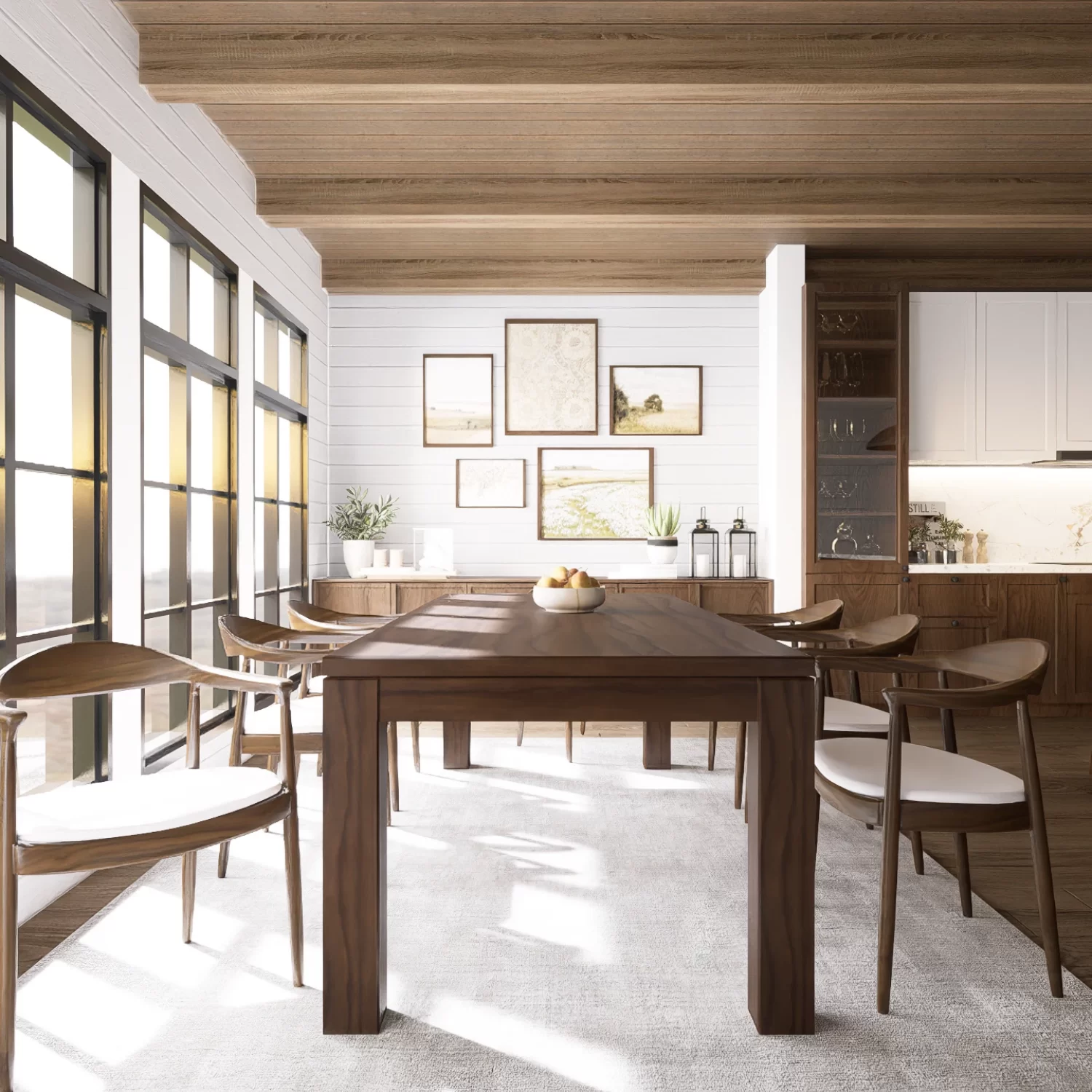
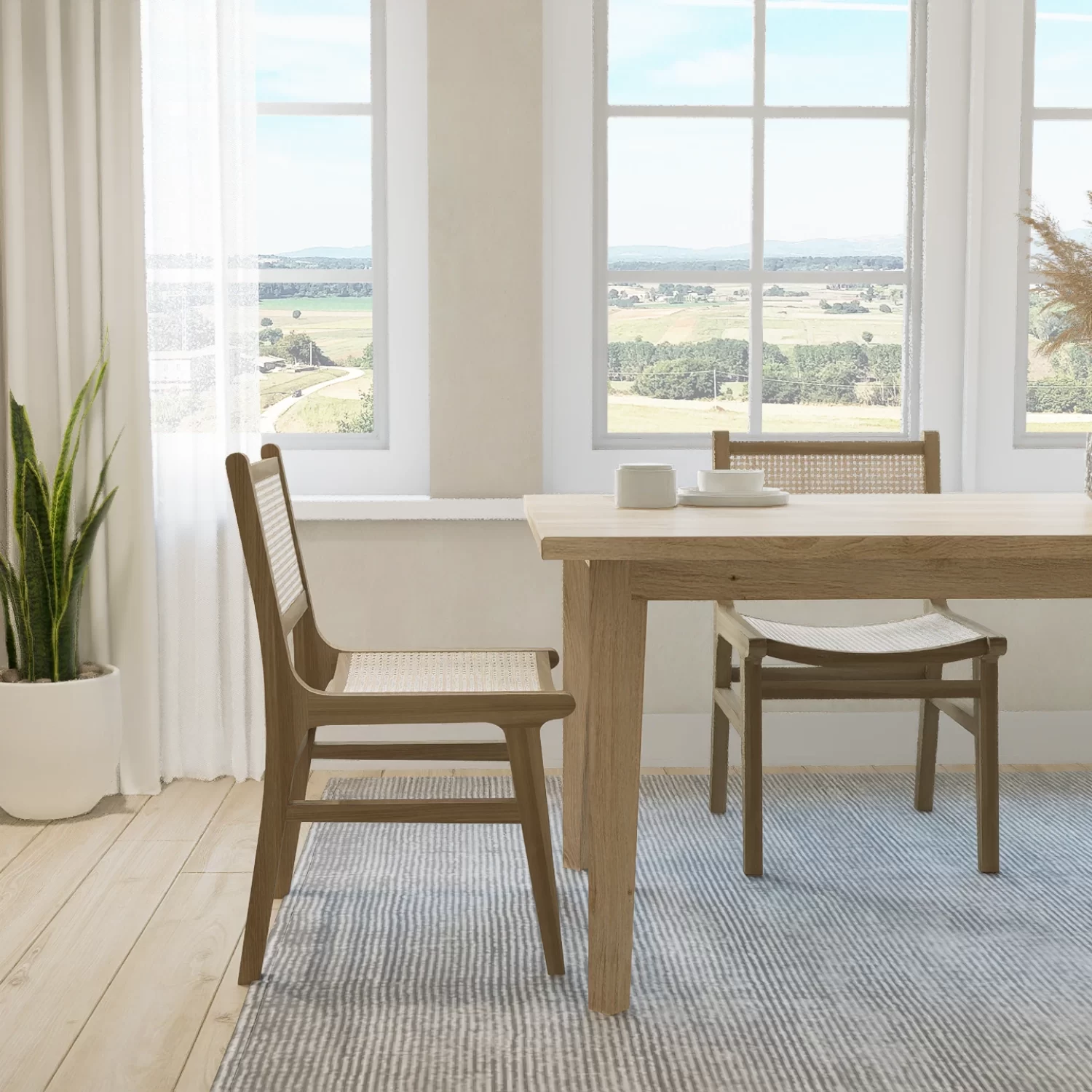
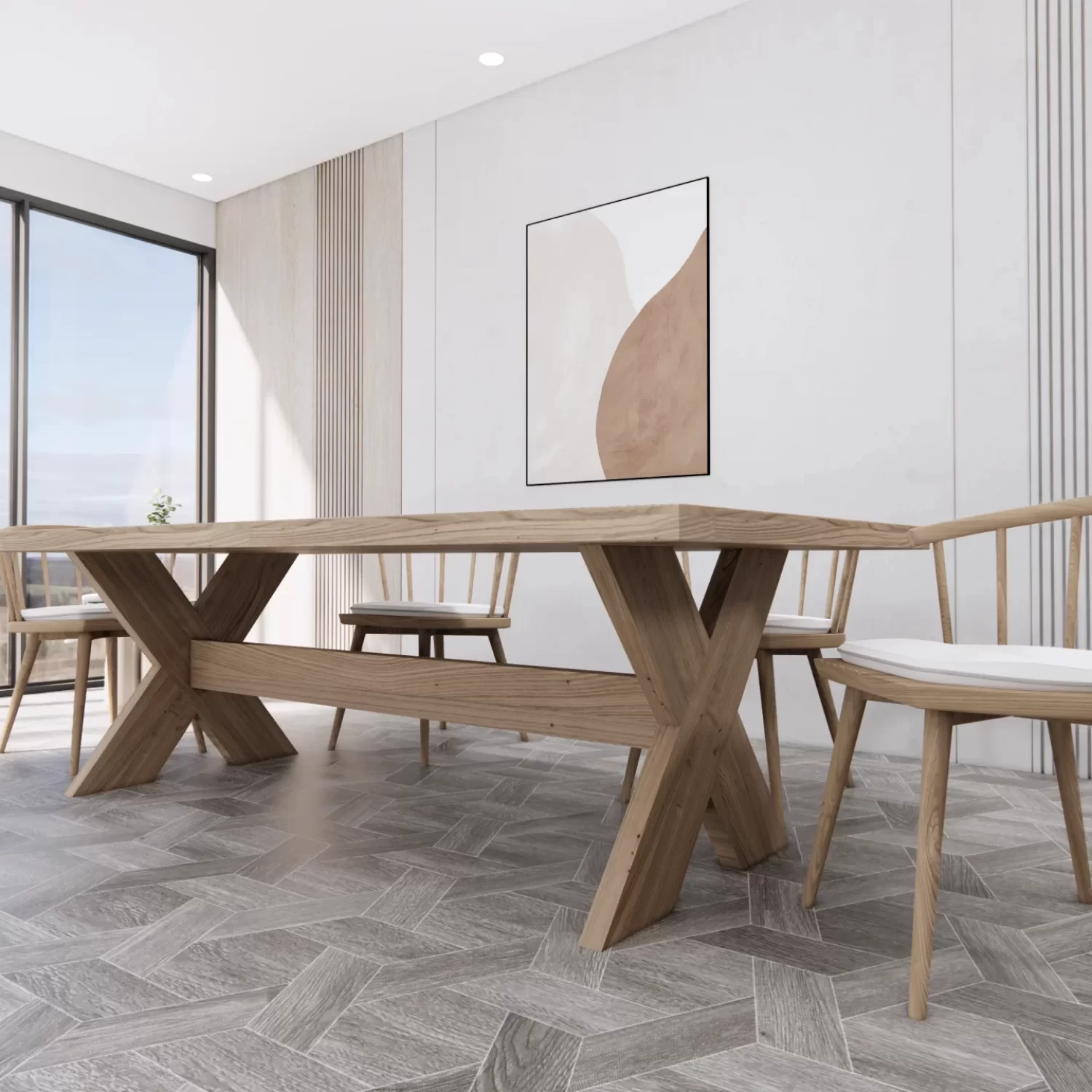
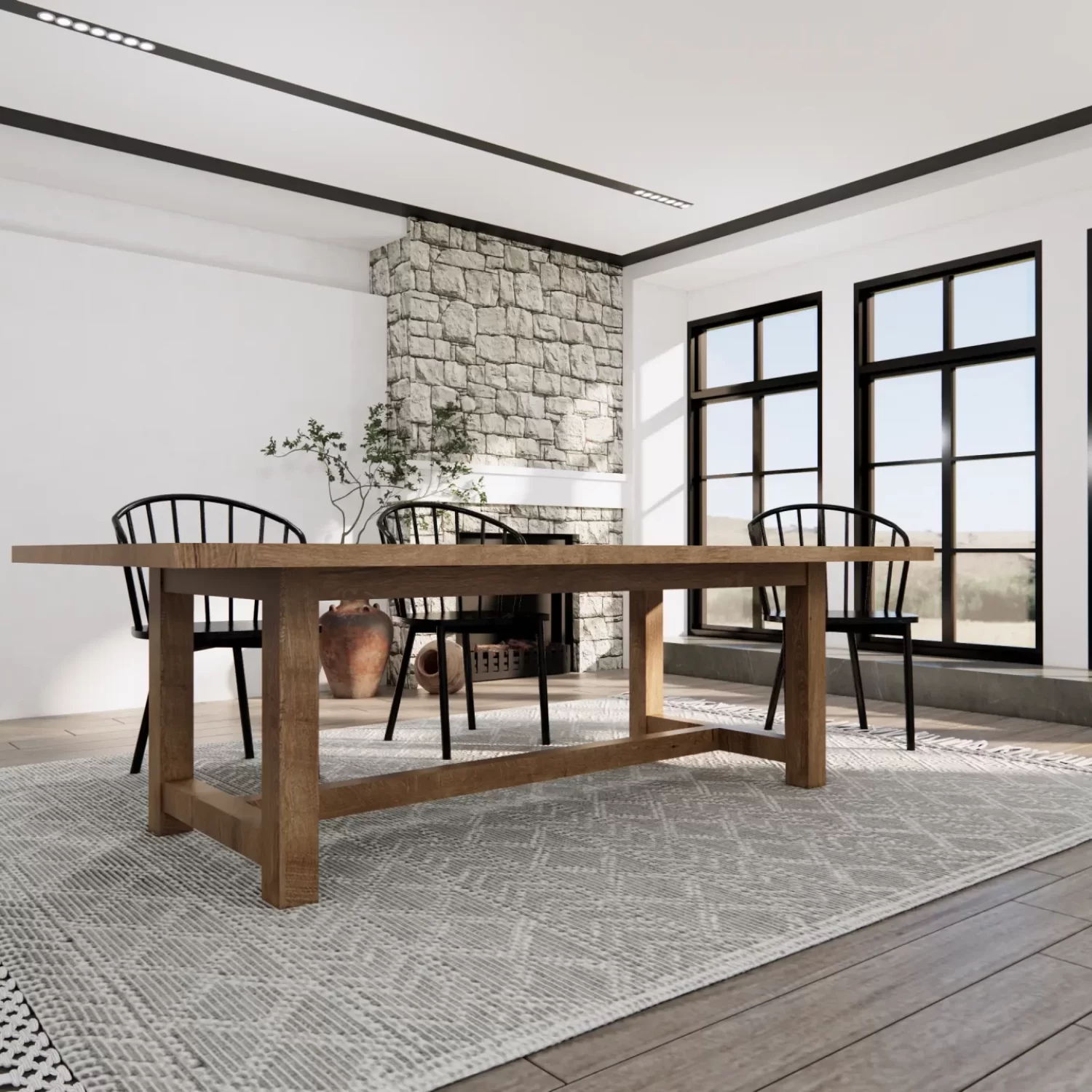
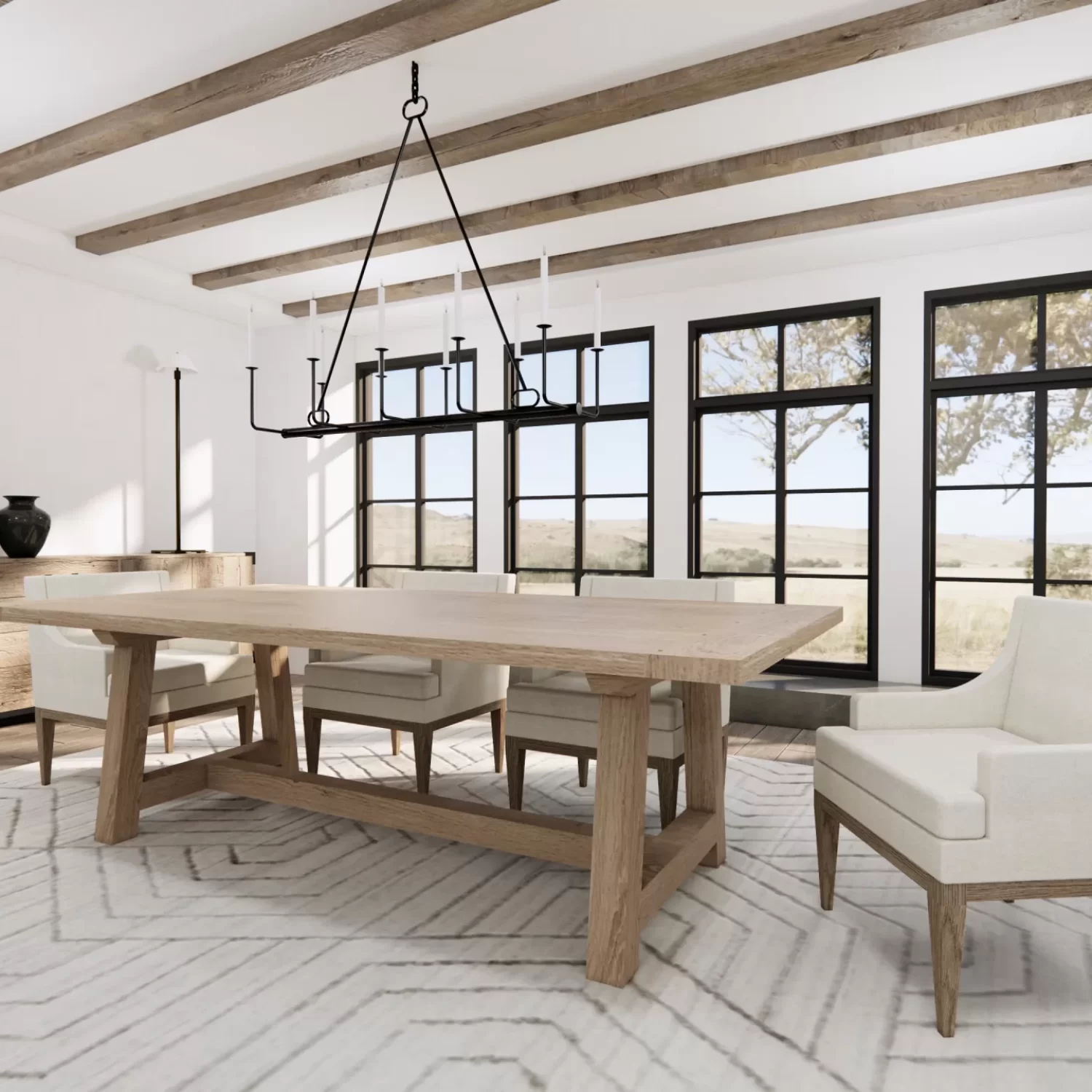
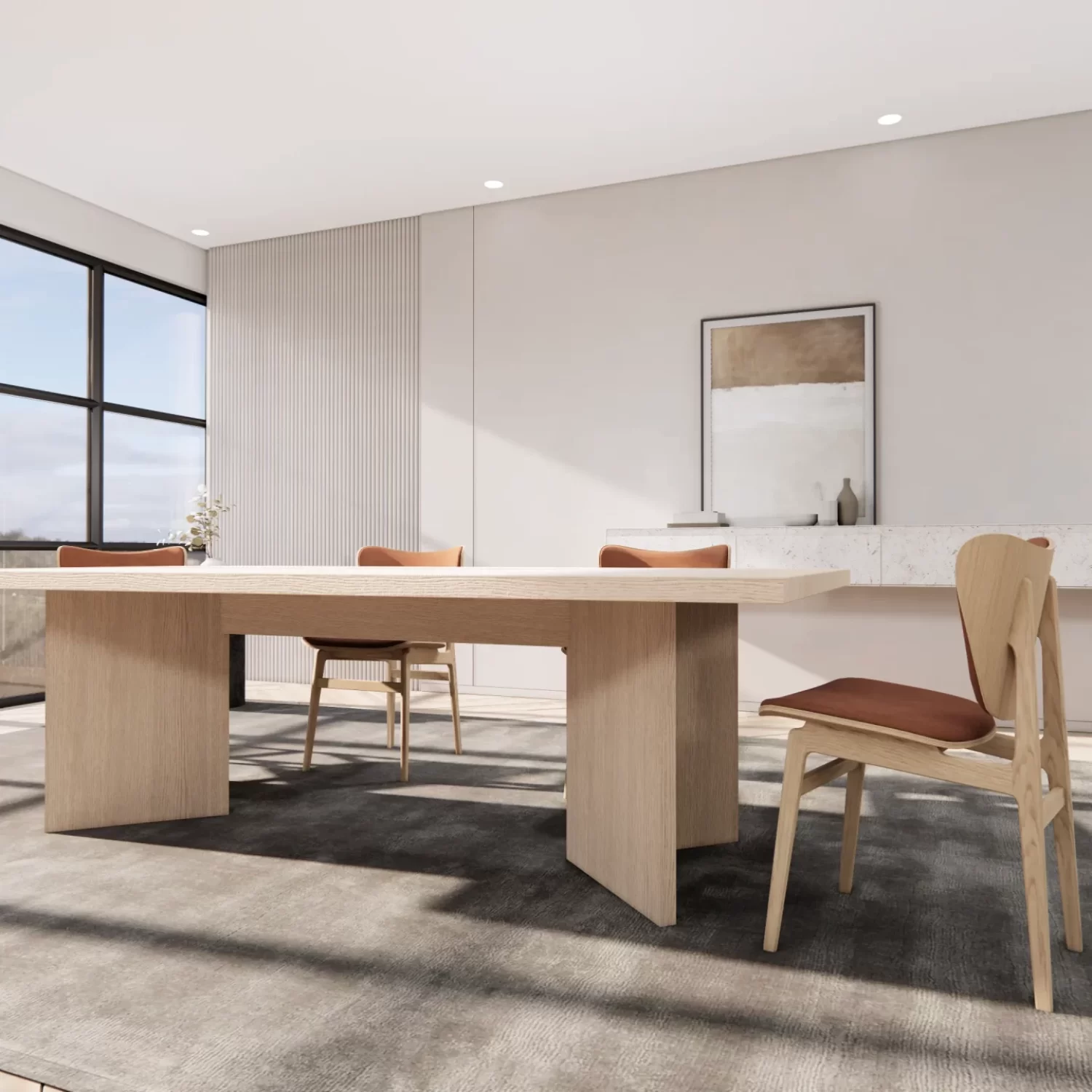
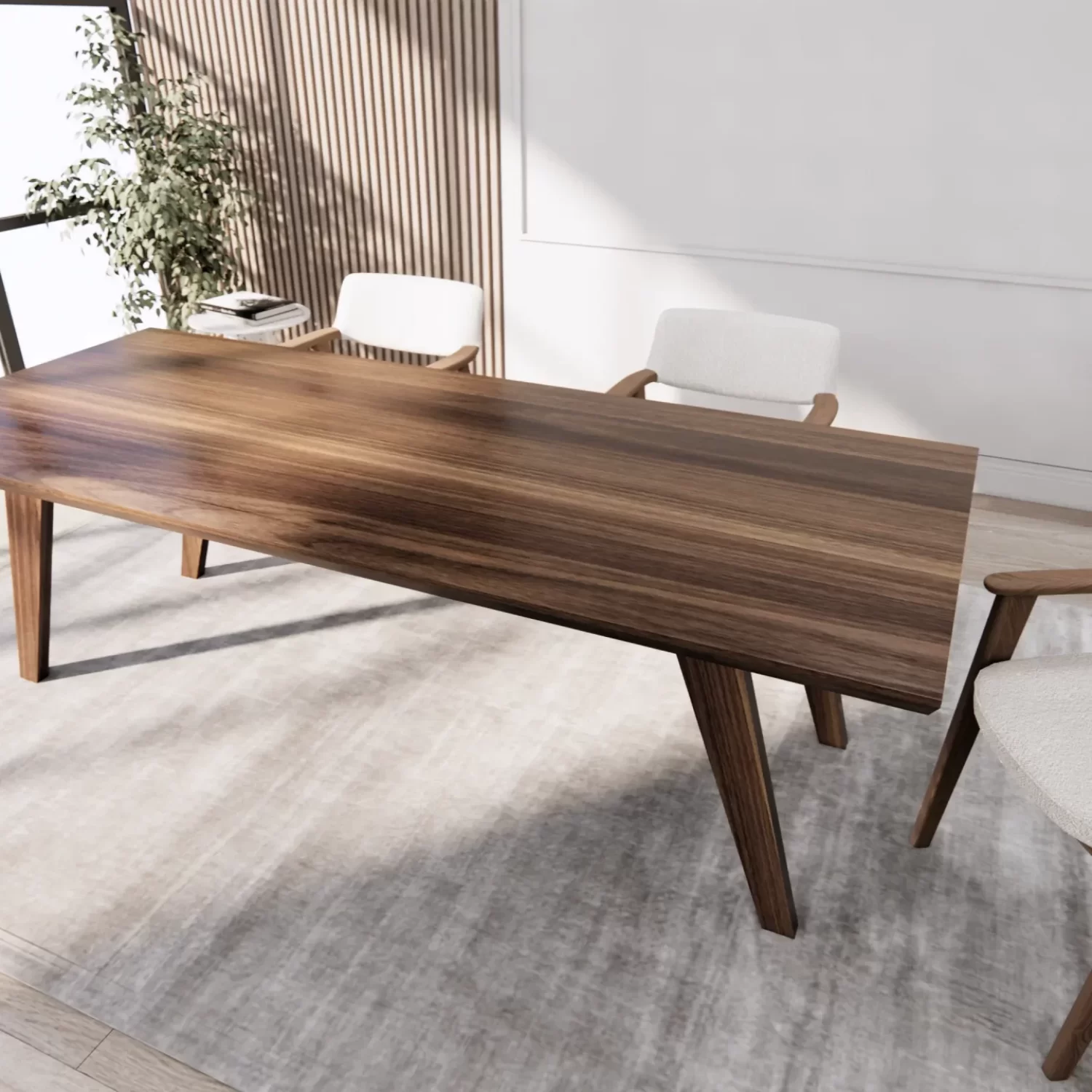
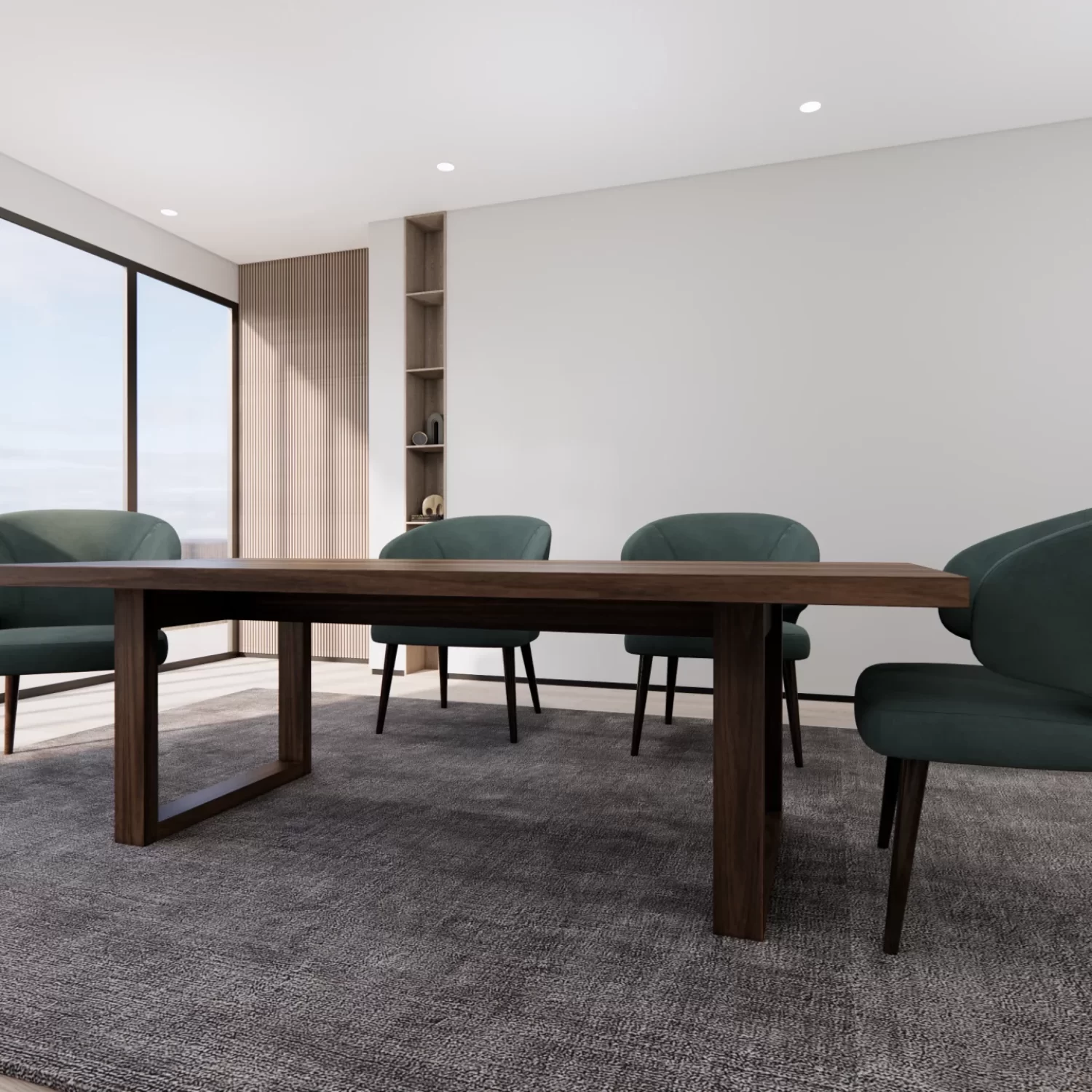
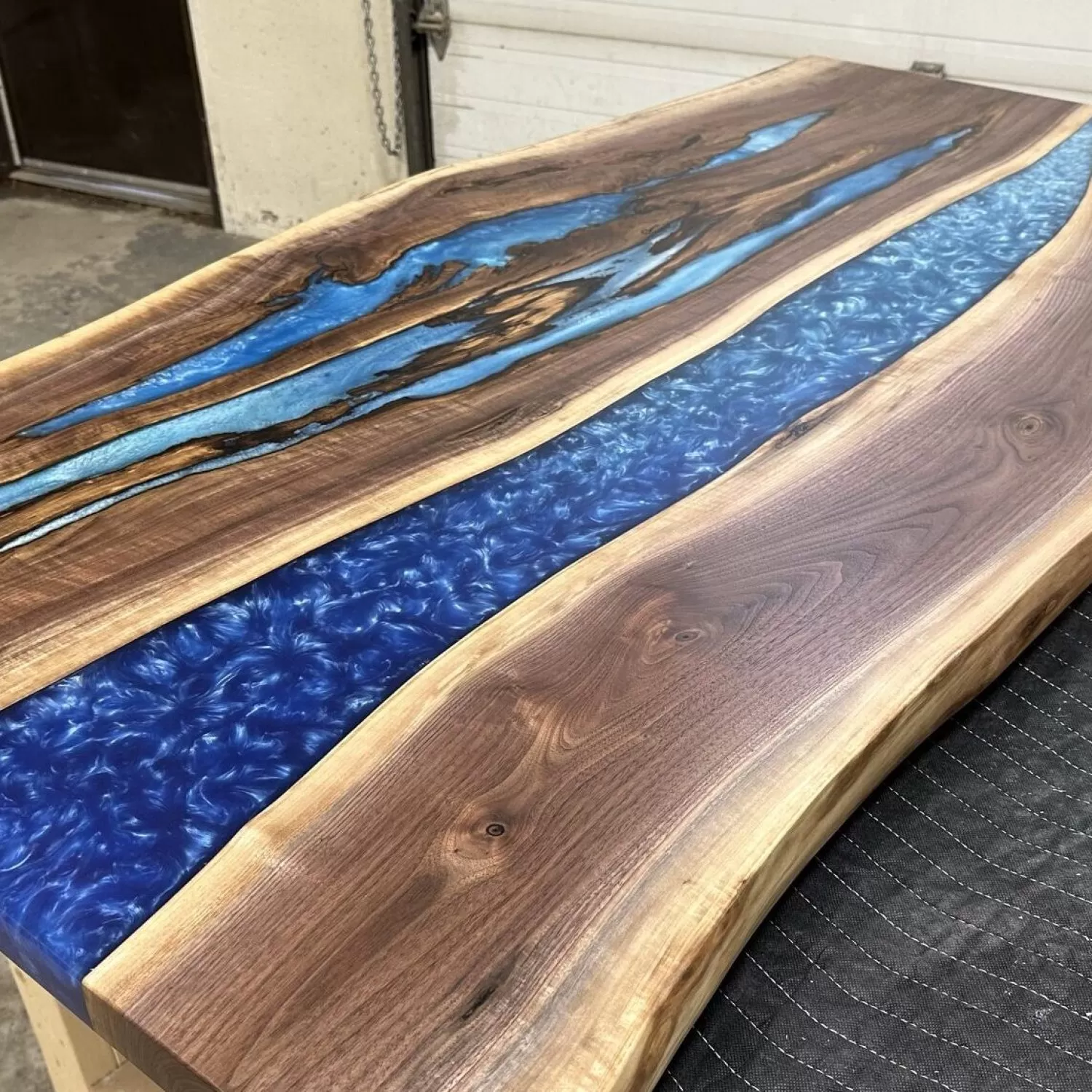
Experience the Enduring Appeal of Wood Dining Tables
Welcome to our premier collection of wood dining tables, where timeless craftsmanship meets contemporary design. Renowned for their strength, natural beauty, and versatile style, wood dining tables are a staple in many homes. From the warm, inviting grain of oak to the sophisticated hues of walnut, our range offers a variety of options to complement any decor. Dive into the world of wood dining tables and discover how these elegant pieces can enhance your dining experience with both style and durability.
Explore our handcrafted wood dining tables, expertly crafted for homes across Canada. Whether you’re in need of a custom piece in Edmonton, Calgary, or Vancouver, we have the perfect dining table to elevate your space:
Types of Wood Used in Dining Tables
Hardwoods
Oak: Known for its strength and distinctive grain patterns, oak is a popular choice for wood dining tables. Its durability makes it ideal for high-traffic areas.
Maple: With its fine grain and resistance to abrasion, maple offers a smooth, modern look. It’s a great option for contemporary wood dining tables.
Cherry: Cherry wood develops a rich, warm patina over time. Its deep color and smooth texture make it a favorite for traditional dining rooms.
Walnut: Walnut’s dark, rich hues and intricate grain make it a luxurious choice for wood dining tables, perfect for adding a sophisticated touch to your space.
Softwoods
Pine: Pine is known for its affordability and versatility. It’s often used in rustic or country-style wood dining tables due to its light color and distinct knots.
Cedar: Cedar offers a unique aroma and resistance to pests. It’s a great choice for a distinctive, aromatic wood dining table with natural charm.
Engineered Wood
Plywood: Made from layers of wood veneer, plywood is a durable and stable option for wood dining tables. It provides a consistent surface and can be finished to mimic solid wood.
MDF (Medium Density Fiberboard): MDF is a versatile and cost-effective material, often used in contemporary wood dining tables. It has a smooth surface that’s easy to paint or veneer.
Benefits of Wood Dining Tables
Wood dining tables offer a range of advantages that make them a popular choice for many households. Here’s why a wood dining table could be the perfect addition to your home:
Durability and Longevity
Wood dining tables are renowned for their exceptional durability and long-lasting quality. The inherent strength of wood ensures that your dining table can withstand daily use and continue to look great for years to come. Whether you choose a hardwood like oak or a softer wood like pine, each type offers robust performance that stands up to the test of time.
Classic and Adaptable Design
A wood dining table brings a timeless elegance to any dining space. Its classic appeal allows it to blend seamlessly with various décor styles, whether you’re aiming for a rustic farmhouse look, a sleek modern aesthetic, or a traditional setting. The versatility of wood means it complements and enhances your existing furniture and room design effortlessly.
Natural Beauty
Each wood dining table is unique due to the distinct grain patterns and natural color variations of the wood. This individuality adds character and warmth to your dining area, creating a focal point that reflects the natural beauty of the material. From the rich hues of walnut to the light, airy tones of maple, wood dining tables bring an organic touch to your home.
Ease of Customization
One of the standout benefits of a wood dining table is its ease of customization. Wood can be tailored to fit your exact specifications, including various finishes, sizes, and shapes. Whether you need a custom size to fit a specific space or a unique finish to match your décor, a wood dining table can be adapted to meet your needs, providing a personalized touch to your dining experience.
If you’re in Calgary and looking for the ideal dining table to enhance your home, visit our Calgary Dining Table page to explore styles designed to complement your space and lifestyle.
Wood Finishes and Styles
Finishes
Stained
Stained finishes are designed to enhance the natural grain of your wood dining table, with options ranging from light, subtle tones to rich, dark hues. This type of finish adds depth and character, accentuating the wood’s unique patterns and making each wood dining table a distinctive piece.
Painted
A painted finish offers a versatile range of color options for your wood dining table. Whether you prefer a bold, vibrant shade or a soft, neutral tone, painting allows you to customize your wood dining table to seamlessly match any décor style and create a personalized look.
Natural
A natural finish preserves the wood’s original color and grain, providing a timeless, authentic appearance. This finish highlights the inherent beauty of the wood while offering protection against daily wear and tear, ensuring your wood dining table maintains its elegance over time.
Styles
Rustic
Rustic wood dining tables embrace the natural imperfections and raw characteristics of the wood. With a rugged, country-inspired appearance, these tables are perfect for creating a cozy, inviting dining area that exudes warmth and charm.
Modern
Modern wood dining tables feature clean lines and minimalist designs, often showcasing the wood’s natural beauty in a sleek, contemporary form. These tables are ideal for adding a touch of sophistication and simplicity to modern dining spaces.
Traditional
Traditional wood dining tables emphasize classic design elements and rich, deep finishes. This style is perfect for formal dining rooms, offering a sense of elegance and timeless appeal that complements more traditional home décor.
Industrial
Industrial-style wood dining tables combine the natural beauty of wood with metal elements, creating a distinctive, urban aesthetic. This style blends raw, industrial materials with refined craftsmanship, resulting in a unique and stylish dining table that stands out in any setting.
Choosing the Right Wood Dining Table for Your Space
Selecting the perfect wood dining table involves several key considerations to ensure it enhances your dining area and meets your needs:
Room Size and Layout
When choosing a wood dining table, start by assessing the size and layout of your dining area. Measure the available space to ensure the table fits comfortably without overwhelming the room. It’s essential that the wood dining table provides sufficient room for seating and movement, allowing for an inviting and functional dining experience. Leave ample clearance around the table to facilitate easy access and movement for guests.
Table Shape and Size
The shape and size of your wood dining table should align with the layout of your room and the typical number of guests you entertain. Round tables are great for smaller spaces and create a cozy, intimate setting, while rectangular tables suit longer rooms and can accommodate more guests. Square tables are ideal for square-shaped rooms and provide a balanced look. Choose a size that allows for comfortable seating and sufficient space for table settings and centerpieces.
Matching with Existing Décor
Each wood dining table is unique due to the distinct grain patterns and natural color variations of the wood. This individuality adds character and warmth to your dining area, creating a focal point that reflects the natural beauty of the material. From the rich hues of walnut to the light, airy tones of maple, wood dining tables bring an organic touch to your home.
Ease of Customization
To achieve a cohesive look, consider how the style and finish of your wood dining table will complement your existing décor. Match the table’s design and finish with other furniture pieces and overall room aesthetics. Whether you’re looking for a rustic wood table to enhance a country-style room or a sleek, modern wood table to fit a contemporary setting, ensure that the wood dining table harmonizes with your current furnishings and contributes to the room’s overall visual appeal.
Need Help?
Frequently Asked Questions
F.A.Q.
When investing in a wood dining table, it's natural to have questions about everything from choosing the right style to caring for your new piece of furniture. In this FAQ section, we've compiled answers to some of the most common inquiries about wood dining tables.
When selecting a wood dining table, the type of wood is crucial for both durability and aesthetics. Hardwoods such as oak, maple, cherry, and walnut are top choices due to their strength, resilience, and natural beauty. Oak, known for its prominent grain and toughness, is ideal for traditional and modern designs alike. Maple and cherry offer smooth, fine grains with rich color variations, perfect for a polished, elegant look. Walnut, with its dark, luxurious tones, adds a sophisticated touch to any dining room. For those seeking affordability and unique character, softwoods like pine and cedar are excellent options, offering lighter hues and distinctive knots. Engineered wood is also a viable, cost-effective alternative, providing durability with a wide range of finishes to match your décor.
Proper maintenance is key to preserving the beauty and longevity of your wood dining table. Start by regularly dusting the surface with a soft, dry cloth to prevent the buildup of dust and dirt. Address spills immediately by wiping them with a damp cloth to avoid stains. To protect the table’s finish, use coasters, placemats, and tablecloths, especially when placing hot dishes or beverages. For added protection, periodically apply a high-quality furniture polish or wax, following the grain of the wood. Avoid placing the table in direct sunlight or near heat sources, as these can cause the wood to warp or fade over time.
Absolutely! Many manufacturers and craftsmen offer a wide range of customization options for your wood dining table. You can select the size, shape, and wood species that best suits your space and personal style. Additionally, you can choose from various finishes, such as stained, painted, or natural, to achieve the desired look. Customization also extends to table legs, edge profiles, and additional features like extendable leaves, making it easy to create a wood dining table that is uniquely tailored to your needs and preferences.
Hardwood and softwood tables each offer distinct advantages depending on your needs. Hardwood tables, crafted from woods like oak, maple, and walnut, are known for their durability, complex grain patterns, and ability to withstand daily wear and tear. These tables are ideal for formal dining rooms or high-traffic areas where longevity is a priority. On the other hand, softwood tables, made from woods like pine and cedar, are lighter and often more affordable. They feature unique knots and textures that add character, making them well-suited for casual or rustic settings. While softer, they still provide sufficient durability for everyday use.
Wood dining tables are prized for their durability, natural beauty, and timeless appeal. Unlike glass, metal, or plastic tables, wood tables offer a warm and inviting atmosphere, making them a favorite for both traditional and modern homes. Wood tables are also highly customizable, with various finishes and designs that can complement any interior style. While other materials may offer different benefits, such as easy maintenance or a sleek look, wood dining tables stand out for their ability to add character and sophistication to your dining space.
A solid wood dining table is made entirely from a single type of wood, offering durability and the ability to be refinished over time. These tables are often more expensive due to the quality of the materials. Veneer tables, on the other hand, have a thin layer of wood (the veneer) applied over a core material, which could be MDF or particleboard. While veneer tables can be more affordable and still offer the look of wood, they may not be as durable or long-lasting as solid wood tables. However, high-quality veneer tables can still be a beautiful and practical choice.
Choosing the right finish for your wood dining table depends on your desired look and the table’s usage. A stained finish enhances the wood’s natural grain and provides a classic, timeless appearance. For a more contemporary look, a painted finish offers a wide range of color options to match your décor. If you prefer to highlight the wood’s natural beauty, a clear or natural finish is ideal, showcasing the grain and texture while offering protection. Consider the durability of the finish as well—some finishes are better suited for high-traffic areas or homes with young children.
Wood dining tables can be an eco-friendly choice, especially when made from sustainably sourced or reclaimed wood. Sustainable forestry practices ensure that wood is harvested responsibly, preserving forests and reducing environmental impact. Reclaimed wood, often salvaged from old buildings or furniture, gives new life to materials that might otherwise go to waste, adding character and history to your dining table. By choosing a wood dining table from eco-conscious manufacturers, you’re making a positive environmental choice.
